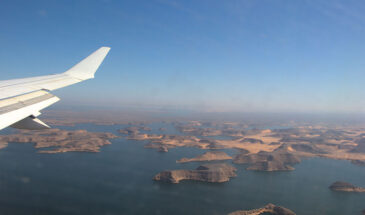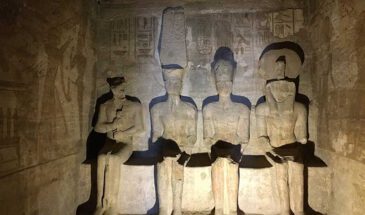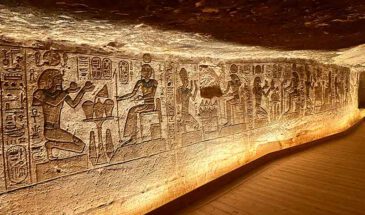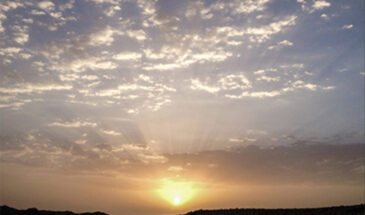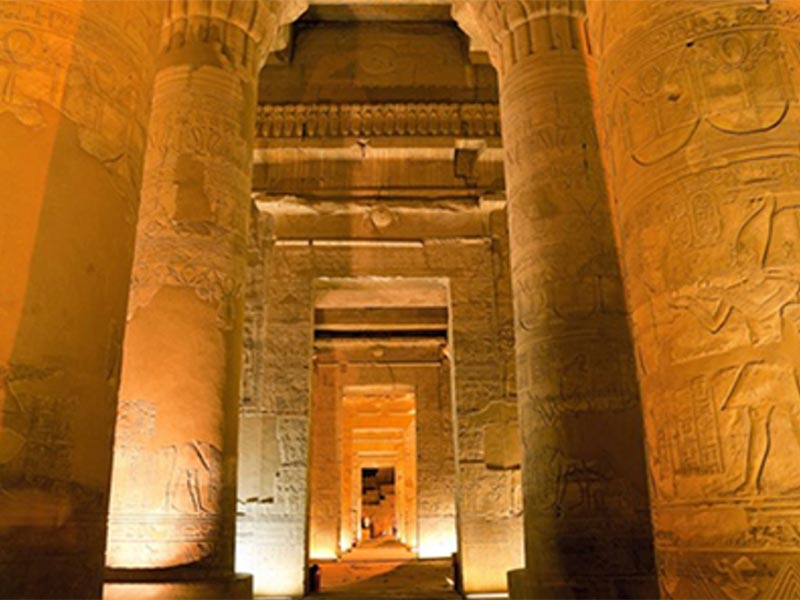- Overview
- Trip Outline
- Trip Includes
- Trip Excludes
- Gallery
- Booking
- FAQ
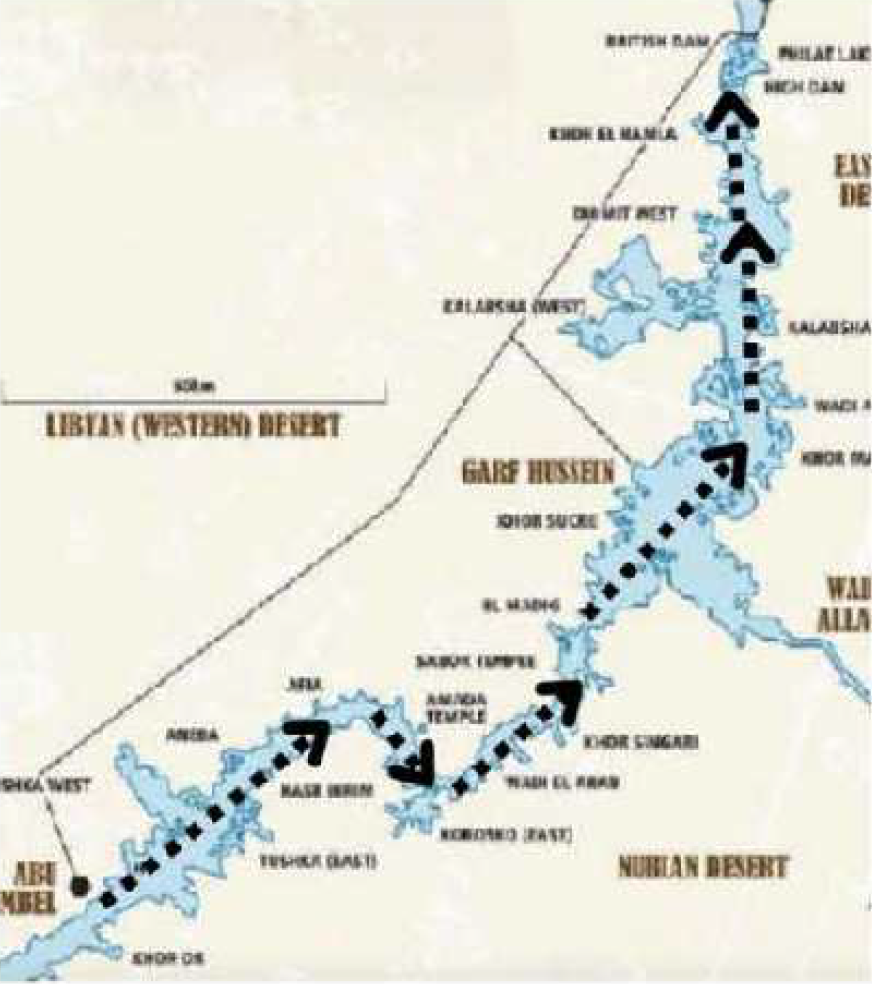 Nubia, the beautiful austere land that once linked Egypt and black Africa, now lies beneath the world’s largest man-made lake – Lake Nasser. Along Lake Nasser’s shore the site Abu Simbel Temples is among the most awe-inspiring monuments in all Egypt after the Giza Pyramids. Built by the greatest of the Pharaos, Ramses II, these huge rock cut temples marked the southern border of the Egyptian Empire with Nubia at the peak of its power during the New Kingdom. Today, they still convey the spirit of a great era, that has stood test of time. But this is only the beginning of an individual boat tour, during which mind and soul find nourishment. Our ship offers all the comforts of a floating home, where you don't have to worry about anything other than enjoying the ever-changing views. The small group ensures a very individual character: Sunrises and sunsets on the water, quiet gliding without a lot of noise and haste, short stops for walks on land, getting spoiled by our crew. Finally we arrive in Aswan. The idyllic city of Aswan, formerly known as Swenett, is located in southern Egypt. The word Aswan is derived from the ancient Egyptian word “Soun”, which means souk or market. Aswan earned its name because it was a strategic gateway to the South. In ancient times, it was the main provider of granite used for obelisks and sculptures. Aswan is known for its beautiful Nile Valley scenery, significant archaeological sites and its peaceful aura. Its weather is warm all year round, which makes it a perfect winter destination. Immerse yourself in Aswan’s rich history and culture. We bring you closer to spectacular destinations individually.
Nubia, the beautiful austere land that once linked Egypt and black Africa, now lies beneath the world’s largest man-made lake – Lake Nasser. Along Lake Nasser’s shore the site Abu Simbel Temples is among the most awe-inspiring monuments in all Egypt after the Giza Pyramids. Built by the greatest of the Pharaos, Ramses II, these huge rock cut temples marked the southern border of the Egyptian Empire with Nubia at the peak of its power during the New Kingdom. Today, they still convey the spirit of a great era, that has stood test of time. But this is only the beginning of an individual boat tour, during which mind and soul find nourishment. Our ship offers all the comforts of a floating home, where you don't have to worry about anything other than enjoying the ever-changing views. The small group ensures a very individual character: Sunrises and sunsets on the water, quiet gliding without a lot of noise and haste, short stops for walks on land, getting spoiled by our crew. Finally we arrive in Aswan. The idyllic city of Aswan, formerly known as Swenett, is located in southern Egypt. The word Aswan is derived from the ancient Egyptian word “Soun”, which means souk or market. Aswan earned its name because it was a strategic gateway to the South. In ancient times, it was the main provider of granite used for obelisks and sculptures. Aswan is known for its beautiful Nile Valley scenery, significant archaeological sites and its peaceful aura. Its weather is warm all year round, which makes it a perfect winter destination. Immerse yourself in Aswan’s rich history and culture. We bring you closer to spectacular destinations individually.Note: Passport copies must be received 30 days before arrival date.
Day 1: Abu-Simbel - Kasr Ibrim (Luxury Safary Boat)
We will board our boat after the visit of the Ramses II and Nefertari temples at Abu Simbel. The twin temples were originally carved out of the mountainside in the 13th century BC, during the 19th dynasty reign of the Pharaoh Ramses II. They serve as a lasting monument to the king and his queen Nefertari, and commemorate his victory at the Battle of Kadesh. Their huge external rock relief figures have become iconic.
The Great Temple at Abu-Simbel, which took about twenty years to build, was completed around year 24 of the reign of Ramses the Great (which corresponds to 1265 BC). It was dedicated to the gods Amun, Ra-Horakhty, and Ptah, as well as to the deified Ramses himself. It is generally considered the grandest and most beautiful of the temples commissioned during the reign of Ramses II, and one of the most beautiful in Egypt.
The Temple was discovered in 1813 by the traveler Burckhardt. During the construction of the Aswan High Dam in the 1960s, the temple had to be rescued by the UNESCO and relocated on its recent location.
Lunch on board. Once on board, we will initiate a four hour sail to Kasr lbrim also known as Ibrim Palace.
Converted into a fortress during the Ottoman Period, it is the only monument that stands unmoved from its original location. Although the Palace was victim to several lootings and damage by thugs, it is still home to an assortment of remains from the Christian and Islamic periods.
Here we will dock as we plan on spending the night in one of the creeks of the area. Dinner on board. (L/D)
Day 2: Amada - Pennout - Wadi el Arab (Luxury Safari Boat)
Breakfast on board. First thing in the morning we will glance at the various nomadic birds that visit Lake Nasser annually (at certain seasons) as we leave our boat to pursue the temples of Amada, Pennout and El Derr.
These temples have been moved by the UNESCO and many other global organizations.
The temple of Amada is considered among the most interesting temples in Nubia. They were built by the king Thoutmosis III and the king Amenophis II.
The temple of El Derr dates back to the time of the Great Pharaoh Ramses II, it was dedicated to the God Amon and later on it helped as a church during the Coptic Era.
The tomb of Pennout was cut and moved bloc by bloc from the Nubian village of Aniba to its actual place.
The faint hum of our boat’s motor will lead us down to the temples of Amada, Pennout and El Derr, which we expect to reach by noon.
After uncovering the wonders of every temple, we will return on board.
Lunch on board.
Continue our adventure. Sailing through the mountainous region of Korousko and Wadi El Arab, one of Nubian's largest valleys, our boat will throw its anchor for the night.
Dinner and night on board. (B/L/D)
Day 3: Dakka- Wadi El Seboua- Meharraqa (Luxury Safari Boat)
Breakfast on board. On this day we travel down Lake Nasser with the goal of discovering three relocated temples, known for their unique sculptures and delicate beauty.
Dakka (Greek: Pselchis): Erected in the same site by the Nubian king Ergamenes II along with Ptolemy II whilst they shared rule over Lower Nubia in the Third century.
Later, the temple was refurbished by Roman Emperors Augustus and Tiberius.
Wadi El Seboua: Accessed through a pathway of sphinxes bearing Ramses's effigy, this temple was built by the Pharaoh Ramses II in dedication to the Gods Amun-Re and Ra.
Lunch on board.
Sailing towards Aswan. We will be passing by the site of Abu Steta desert, which is known for its reputation of its golden sand dunes and congregations of exotic birds in the small lagoons such as pelicans, cormorants, flamingo and various of small birds. (at certain seasons)
We will anchor to visit the site of Wadi El Seboua, Dakka and Meharraqa.
We will pass by the region of Khour El Alaki which is considered the widest area on Lake Nasser as its span width reaches 60 Km.
After crossing the area of Bab Kalabsha where the lake in this part is agitated and wavy. (at certain seasons)
The boat will journey to spend the night in one of the bays.
Dinner on board. (B/L/D)
Dav 4: Kalabsha - Beit El Wali – Aswan (Luxury Safari Boat)
Breakfast will be served as we make an early departure towards Aswan city. This particular route features a beautiful display of the Lake's banks.
Kalabsha it was known with the name of Mandoulis dates back to the time of the Romains. In the old days it was located in the city of Kalabsha and then rescued and moved to its actual location.
Beit el Wali means the house of Saint; it was carved in the mountain during the reign of the great Pharaoh Ramses II.
We will be visiting the original sites of Beit El Wali and Kalabsha along with enjoying a final dip in the lake before concluding our journey at Aswan. These two temples are situated ten minutes away from our dock.
Check-out. We will say Good-Bye (B)
NOTE! The program is given as an indication, it depends on the navigation and the local conditions of the moment and any force majeure related to the weather. The order of the visits can be modified but the entirety of the program will be respected.
The weather in this region in February, March and April sometimes forces us to dock due to the sand winds and storms strength which can reach the speed of 8O km/h
- Private guided tour
- Accommodation 3 nights on Luxury Safari Boat.
- Meals 3 B / 3 L/ 3 D
- Flat Mineral Water (3 bottles 3/4l pp), tea, instant coffee (Nescafe) during the trip.
- Transfer from Abu Simbel airport/hotel to the boat and from the boat to Aswan hotel/airport.
- Entrance fees for all the sites mentioned in the program.
- French, English or German Egyptian Egyptology guide.
- All visits mentioned in the program.
- Obligatory Tips for the staff (45 Euro pp for the whole stay)
- Obligatory Tips for Tour guide (75 Euro pp for the whole stay)
- Alcoholic drinks, beer, wine, soda drinks, sparkling water (with supplement).
- Travel insurance or any kind of insurances.
- Transfer Aswan / Abu-Simbel (with supplement)
- Sound & Light of Abu-Simbel temple (with supplement) Not valid for this trip
No Details Found



